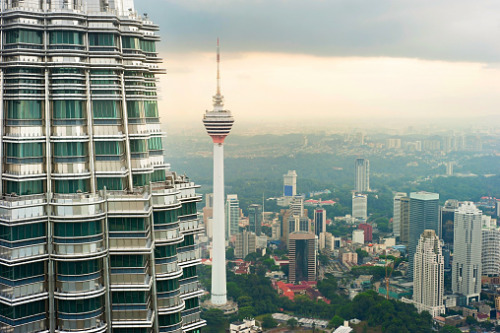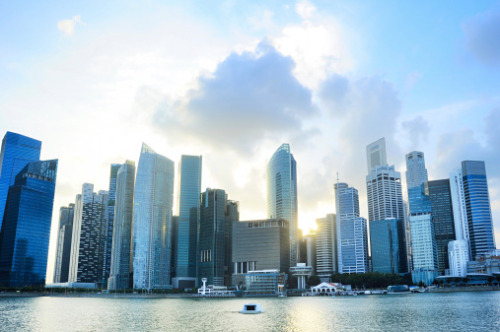The Trans-Pacific Partnership Agreement: What? Why? And ASEAN.
October 13, 2015
The deal took a major step forward this week with the signing of a TPPA agreement in Atlanta, USA. But with the full terms yet to be revealed, what do we really know about the TPPA? And what does it mean for ASEAN?
What is it?
The TPPA is a sweeping trade deal which will encompass 40% of the world’s economy. It has been described by some as the most important trade deal for a generation. TPPA aims to cut tariffs and set common standards for trade between member countries.

Who is involved?
Well the seeds of this herculean deal were sewn in an agreement signed ten years ago between Brunei Darussalam, Chile, New Zealand and Singapore. Ultimately the 12 countries who have signed the most recent deal comprised of Australia, Brunei Darussalam, Canada, Chile, Japan, Malaysia, Mexico, New Zealand, Peru, Singapore, the United States and Vietnam.
Why sign up?
Aside from the benefits of reduced trade tariffs and the facilitation of trade through shared common standards, member countries hope that the agreement will deepen mutually beneficial economics ties, increasing exports and boosting economic growth.
What goods and services does the TPPA cover?
A huge range of goods are covered, with agreements on everything from cars and clothing to intellectual property and healthcare. Of those areas covered by the TPPA the latter are the most controversial.

Who is opposing and why?
Intellectual property laws in the US are notoriously strict, and campaigners are concerned how this may impact freedom of speech, especially in regards to the internet. Likewise healthcare has been a contentious issue. Licencing laws on medicines have been a sticking point, particularly for firms worrying worry about reductions in the length of monopoly on newly developed drugs. Without the fully released agreement it is difficult to say how valid these concerns are, or what compromises have been made.
But the deal has been signed?
Yes. Despite the perceived concerns of some civil groups and certain areas of business the governments involved believe the benefits of TPPA outweigh the challenges.
Businesses are generally in favour of the deal, and have added their voice to government supporters. In clarifying trade rules and reducing red tape between member countries, trade within this American-Pacific group of countries will arguably become much easier.
What’s Next and Who Will Benefit?
While an agreement has been signed by representatives of the member countries, approval must be ratified by governments involved. At this stage it is extremely unlikely there would be significant changes to the agreement itself, so respective governments must accept or reject the deal in its entirety.
In Malaysia it is expected that TPPA will be passed through the Dewan Rakyat, although with the current sitting beginning on October the 19th focussed on the Budget 2016, government sources have noted that the timing may be challenging.
Added to this is the difficulty of upcoming Canadian elections on October 19th. As a large member of the TPPA, the results of those elections could impact the agreement.
The biggest partner is of course the United States. However President Barack Obama was granted ‘fast-track’ authority to move the deal forward. Congress may not amend or filibuster the agreement, but have the ability to review and vote for or against. It is expected to pass in the US.

TPPA in ASEAN
With member nations Brunei Darussalam, Malaysia, Singapore and Vietnam, the four ASEAN countries signing up to the deal, accounting for only 25% of the ASEAN population and only a third of GDP, what does this mean for those countries, and ASEAN as a whole?
Those not in the deal?
Some have expressed concerns that with only four ASEAN members part of the deal, the TPPA could cause a confusion of trade and add barriers to cohesion within the region. This is unlikely to last. Indonesian Trade Minister Thomas Lembong noted in a recent interview that the country could itself join the TPPA within two years, once the nation had completed necessary preparations.
The largest ASEAN economy joining the agreement would be a huge motivation for others in the region, and indeed business groups in Thailand and the Philippines have already made clear their own support for joining the agreement.

What are the benefits for ASEAN states in the deal?
The TPPA provides signatory countries with access to a market of 800 million people with a combined GDP of $US 27.5 trillion. That’s huge market potential. So how are ASEAN countries likely to fare in this brave new market?
Vietnam
Vietnam is expected to be one of the biggest winners in the TPPA. With a low-wage economy heavily reliant on exports, slashing of tariffs on an estimated 18,000 export goods will be a huge economic boost.
Some estimates suggest a potential increase in Gross Domestic Product of 11% over 10 years, an increase of $36 billion resulting from a 28% rise in exports. Vietnam could become the poster boy success story for this international trade agreement.
Brunei
Brunei may be the smallest trade partner in the agreement but with its strong links to the international oil and gas industry, a reduction of trade barriers is likely to facilitate easier and more beneficial trade links with international partners.

Singapore
Singapore already benefits from free trade agreements with the majority of TPPA countries, barring Canada and Mexico. These highlight how important trade is to a nation which is hugely reliant on the economic benefits of being one of the world’s greatest ports. With TPPA Singapore benefits from a much wider range of goods and services that fall under the scope of free trade with member countries.
Malaysia
Malaysia, like Vietnam, is expected to be one of the countries which most benefits from TPPA and it has strong support in the Malaysian International Chamber of Commerce and Industry. Supporters argue it is an important step to open up global market access and spur economic growth.
Some estimates suggest a resultant 5.6% increase in GDP and 11.9% rise in exports by 2025 with the introduction of TPPA and resultant lowering of trade barriers. It is argued that the agreement would further spur foreign direct investment in Malaysia, already benefitting from being the third biggest recipient of such in the ASEAN region. The biggest winners are likely to be exporters of electronics, palm oil and rubber.
Where Next?
The next big step for TPPA is one that supporters and opponents alike have been eagerly awaiting: the release of the full 30 chapters of the agreement itself. Until then we won’t know the full details of what is likely to be one of the biggest shake-ups of world trade in a generation. We will also have a better idea of where nations stand on ratifying the deal.
With titan economies like India assessing their own prospects in TPPA, and other countries waiting on the wings, we could well be witnessing the first step in the world’s largest ever multi-lateral trade deal.
No comments:
Post a Comment